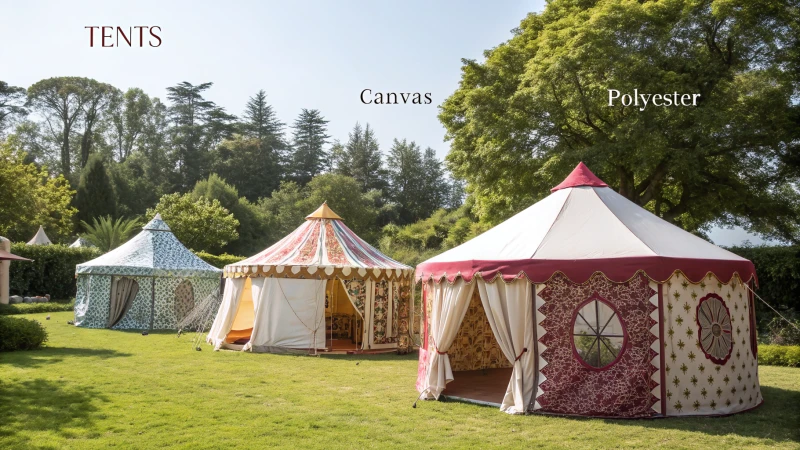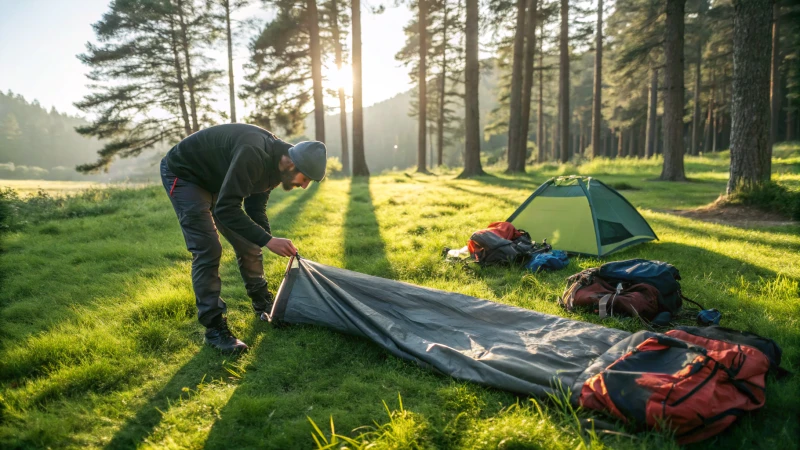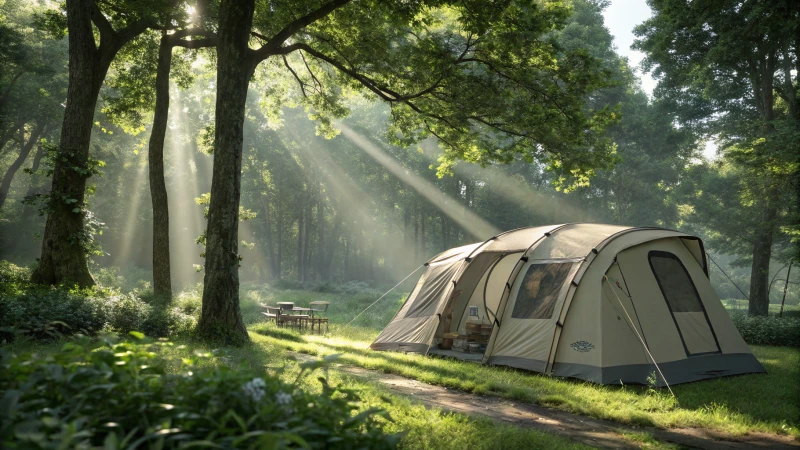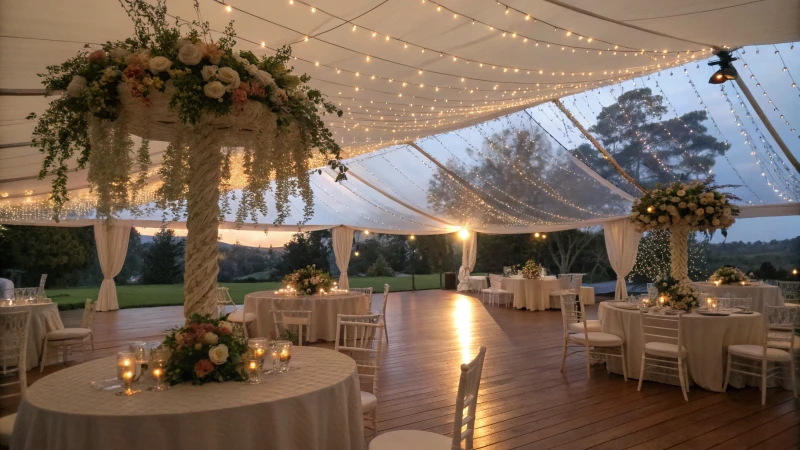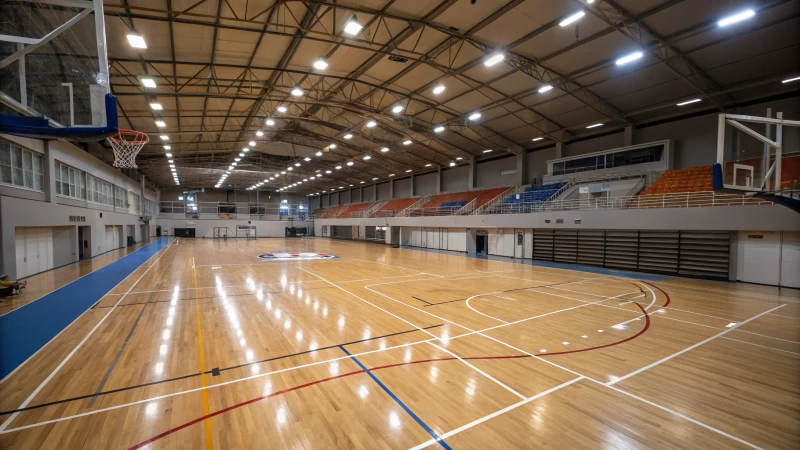
Imagine stepping onto a perfectly-sized indoor basketball court, where every dribble and shot feels just right.
An indoor basketball court usually measures 28 meters long by 15 meters wide, with a ceiling height of at least 7 meters. This standard size fits a typical court, but you can tailor dimensions to suit multiple courts or specific needs.
I remember when I first decided to set up an indoor basketball court; I was overwhelmed by the different options. From choosing the right size to ensuring it met official standards, it was a journey! Beyond just the dimensions, materials like aluminum alloy and PVC fabric play a crucial role in durability and safety. These choices can affect everything from the court’s lifespan to how it feels when you’re playing a high-energy game. Let’s dig into these elements so you can make the best choices for your court.
Standard indoor basketball court is 28 meters long.True
A standard indoor basketball court measures 28 meters in length.
Indoor basketball courts require a minimum height of 5 meters.False
The minimum height for an indoor court is actually 7 meters.
How Do Court Dimensions Vary Across Different Levels of Play?
I’ve always been fascinated by how the dimensions of a court can change the entire flow of a game.
Standard court dimensions vary across different levels of play, shaping the game’s strategy and dynamics. For example, an NBA basketball court is larger than a high school court, impacting how players space themselves and manage the game’s pace.
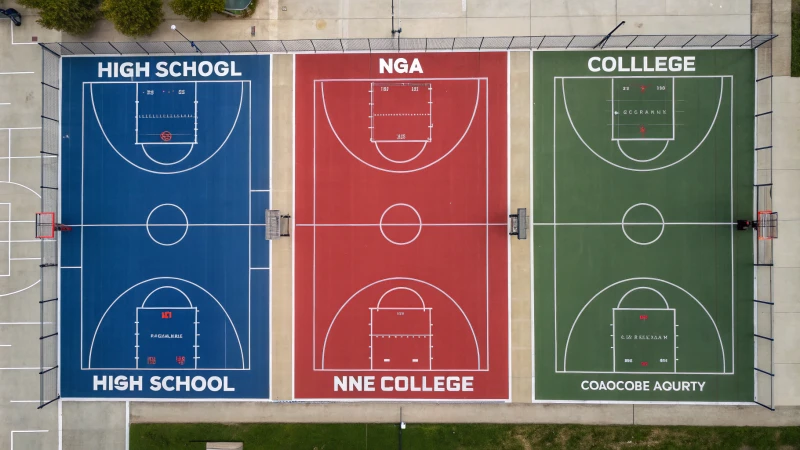
Basketball Court Dimensions
I remember the first time I stepped onto an NBA-sized basketball court; it felt like stepping into a different world. In high school1, our court was 84 feet by 50 feet, which seemed huge at the time. But when I faced the 94 feet by 50 feet expanse of an NBA2 court, I realized how much more room there was to maneuver, and how that extra space demanded quicker decision-making and more strategic spacing.
| Level | Length | Width |
|---|---|---|
| High School | 84 ft | 50 ft |
| College | 94 ft | 50 ft |
| NBA | 94 ft | 50 ft |
The size of the key also changes things up. In high school games, it’s just 12 feet wide, making it feel like you’re constantly in traffic. College and pro keys widen to 16 feet, opening up lanes and changing defensive strategies.
Tennis Court Dimensions
Playing tennis with friends in my backyard was always a treat, but moving to a real tennis court made me appreciate the subtle differences between singles and doubles courts. A singles court3 is 78 feet by 27 feet, perfect for one-on-one matches where every inch counts. But when playing doubles, the width expands to 36 feet. That extra width can transform a game, allowing for more complex team strategies and longer rallies.
| Match Type | Length | Width |
|---|---|---|
| Singles | 78 ft | 27 ft |
| Doubles | 78 ft | 36 ft |
Implications on Gameplay
These variations aren’t just numbers on paper; they have real implications for how games are played. On larger courts, players must adapt their speed and stamina to cover more ground. I’ve seen firsthand how a bigger basketball court can affect shooting accuracy or how a wider tennis court demands quicker footwork. Coaches often tweak training routines to get athletes used to these differences, ensuring they can perform at their best no matter the court size4.
High school basketball courts are 94 feet long.False
High school courts are 84 feet long, not 94 feet.
Doubles tennis courts are wider than singles courts.True
Doubles courts are 36 feet wide, singles are 27 feet wide.
What Customization Options Are Available for Indoor Basketball Courts?
Ever wondered how you can turn your indoor basketball court into a personal haven for sports lovers? Let’s explore the endless possibilities for making your court uniquely yours.
From flooring types to custom logos, you can transform your indoor basketball court with tailored options like wall designs, color schemes, and lighting systems. Personalize your court to reflect your style and enhance the playing experience.
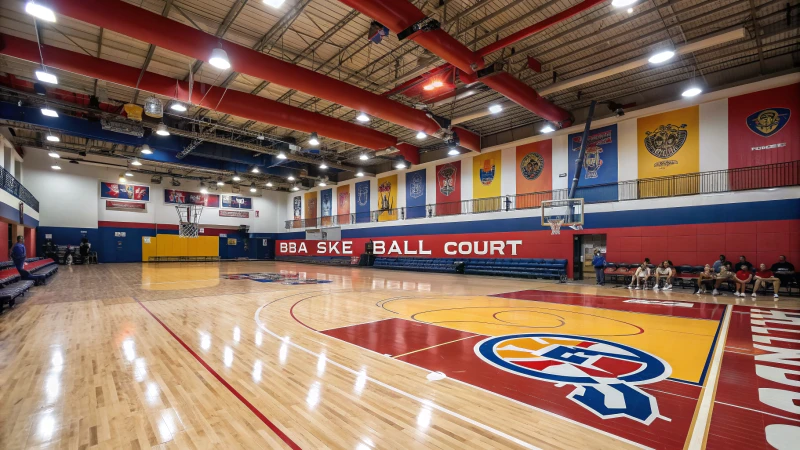
Flooring Options
I remember the first time I set foot on a pristine hardwood basketball court; it felt like stepping into an arena of possibilities. The bounce of the ball was crisp, and the floor had that professional sheen that just screamed quality. For those looking to recreate this classic feel, hardwood flooring is the go-to choice. But let’s not forget the benefits of engineered wood floors5, which offer that same classic vibe but with a touch of modern flexibility and cost-effectiveness. And if you’re like me, sometimes considering a more forgiving surface for those long practice hours, rubber flooring is a fantastic option. It’s cushioned, slip-resistant, and can really save your knees from all that jumping.
| Flooring Type | Benefits | Considerations |
|---|---|---|
| Hardwood | Professional feel, durable | Requires regular maintenance |
| Engineered Wood | Cost-effective, flexible | Less traditional look |
| Rubber | Cushioned, slip-resistant | May not suit professional play |
Wall and Ceiling Designs
When I was working on designing my first indoor court, I wanted it to be more than just functional—I wanted it to echo my personality. Creative wall designs6 can transform a plain gym into an inspiring space. Acoustic panels not only enhance sound quality but also add a modern touch. And for those of us who love art, murals or graphics can bring personal stories to life right on the walls. Don’t overlook ceiling height, though; ensure it’s regulation-compliant so you can dunk like a pro without worries.
Color Schemes and Logos
The choice of color scheme can really energize a space. I once played in a court that had the most striking colors; it was like stepping into a new world each time. Selecting colors that reflect your brand or team identity can make the space feel uniquely yours. Add custom logos or court markings7 to put your stamp on it.
Lighting Solutions
There’s nothing like the perfect lighting to elevate the playing experience. I’ve learned that LED lights are not only energy-efficient but also provide excellent illumination. Consider smart lighting systems that let you adjust brightness and color temperature—ideal for setting different moods or accommodating various events8.
Additional Amenities
Finally, think about what would make your court more inviting. I’ve seen courts with incredible amenities like seating areas, scoreboards, and even fitness equipment9. These features make the space versatile enough for events beyond just basketball games, transforming it into a community hub where people gather to enjoy not just sports but life itself.
Hardwood flooring requires regular maintenance.True
Hardwood floors need upkeep to maintain their durability and appearance.
Rubber flooring is ideal for professional basketball play.False
Rubber flooring is cushioned but not typically used for professional games.
What Materials Are Best for Constructing an Indoor Basketball Court?
I remember the excitement of planning my indoor basketball court, but the overwhelming options for flooring left me stumped. Let’s break down the best materials together.
When deciding on materials for an indoor basketball court, hardwood is ideal for professional play, synthetic surfaces offer versatility, and vinyl is a budget-friendly choice. Each has its own benefits and maintenance requirements.
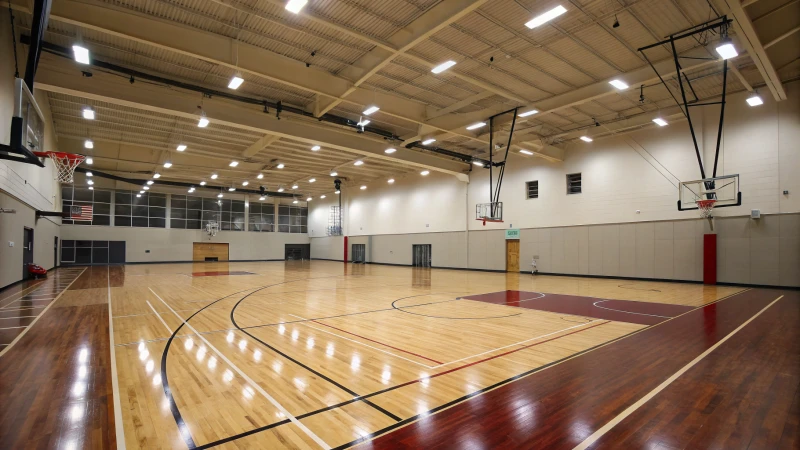
Hardwood Flooring: The Gold Standard
I can’t help but think of my favorite NBA games when I consider hardwood floors. It’s like bringing a piece of the arena into my own space. Maple hardwood stands out for its performance, providing that consistent bounce and shock absorption that basketball lovers crave. But, just like maintaining a classic car, it demands attention and care—routine polishing and cleaning to keep it in top shape.
| Pros | Cons |
|---|---|
| High performance | High cost |
| Durable | Regular maintenance |
Synthetic Surfaces: Versatility and Durability
When I first encountered synthetic surfaces, I was amazed at their flexibility. They’re a smart choice if you’re looking for something that can adapt to different sports or activities. These materials can mimic hardwood’s bounce with added cushioning, which was a big selling point for me when considering multi-purpose use in my facility. Plus, they’re easier to install—less of a headache compared to dealing with wood.
Vinyl Flooring: Budget-Friendly Option
I get it—sometimes budget constraints are a reality we must face. Vinyl flooring has been a lifesaver for those projects where the funds are tight but the dreams are big. It’s easy to install and maintain, and while it might not have the prestige of hardwood, it’s reliable. This makes it a great option for schools or community centers where functionality trumps luxury.
Explore more on how these materials compare by checking out professional insights from sports facility experts10. The right choice depends on your facility’s purpose, budget, and maintenance capabilities. Consider these factors carefully to enhance player experience and facility longevity.
Environmental Impact of Court Materials
In our world today, thinking about sustainability is a must. I’ve learned that while hardwood harvesting can be quite resource-heavy, synthetic options often include recycled materials, which eases my eco-conscience a bit. Checking for certifications like FSC or Greenguard helps ensure that the choice is as green as possible.
Understanding the environmental impact is crucial in today’s sustainable building11 practices.
Maintenance Considerations
Each type of flooring comes with its own care manual. While hardwood needs frequent polishing, synthetic surfaces might just need a good wash now and then. Vinyl? Just occasional cleaning and scratch-checking will do.
For detailed maintenance guides, consult maintenance professionals12 specializing in sports floors to keep your court in top condition.
Ultimately, choosing the right material for an indoor basketball court is about striking a balance between performance, budget, and upkeep. Once I understood each material’s properties, making an informed decision felt not only possible but empowering.
Maple hardwood is the cheapest court material.False
Maple hardwood is expensive due to its high performance and durability.
Vinyl flooring requires minimal maintenance.True
Vinyl is low-maintenance, needing occasional cleaning and scratch checks.
What is the approval process for temporary basketball court structures?
Setting up a temporary basketball court can feel like navigating a maze of permits and rules. Here’s how to tackle it smoothly!
To get approval for a temporary basketball court structure, familiarize yourself with local zoning laws, secure necessary permits, and comply with safety standards. Engaging with local authorities and ensuring complete documentation can streamline the process, making it efficient and hassle-free.
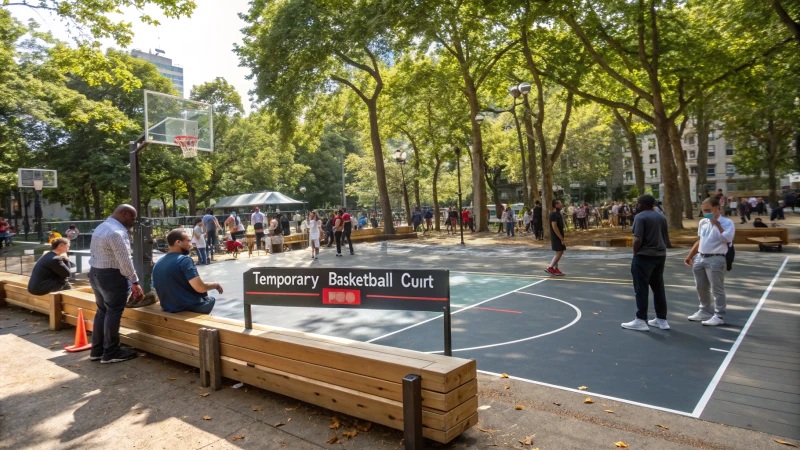
Understanding Local Zoning Laws
You know, I remember when I first considered setting up a temporary basketball court. It was a bit overwhelming at first, like trying to learn a new dance. One of the first steps was getting to grips with local zoning laws13. These dictate where you can place your court and any specific requirements it needs to meet.
- Residential Zones: These can be a bit tricky, often having stricter rules on size and duration.
- Commercial Zones: Typically, there’s a bit more leeway here, but you’ll still need to adhere to certain safety and aesthetic standards.
Acquiring Necessary Permits
After getting my head around zoning, the next hurdle was permits. This part can feel a bit like a treasure hunt—each type of permit is a piece of the puzzle:
| Permit Type | Description |
|---|---|
| Building Permit | Ensures structural safety and compliance with local building codes. |
| Zoning Permit | Confirms the structure aligns with local land use policies. |
| Environmental Permit | Needed if construction affects natural resources. |
Touching base with local government offices or permit agencies14 was crucial for me to ensure I had all my ducks in a row.
Adhering to Safety Standards
Safety became my mantra—it’s all about making sure the structure meets specific standards:
- Fire Safety: Using materials that pass fire resistance standards.
- Structural Integrity: Ensuring the structure can withstand local weather conditions, like wind.
- Accessibility: Meeting ADA regulations for access was key.
Consulting with Local Authorities
One of the best pieces of advice I received was to talk with local authorities early on. They were invaluable for guidance on:
- Navigating the maze of regulations.
- Understanding community concerns or restrictions.
- Spotting potential issues before they could derail my plans.
This proactive approach helped speed up approvals and kept surprises to a minimum.
Ensuring Complete Documentation
I can’t stress enough how having all documents ready beforehand is like having an ace up your sleeve. My package included:
- Detailed site plans and design specs.
- Proof of compliance with zoning and safety standards.
- Any other legal documents15 required by local authorities.
Being prepared not only sped things up but also showed the regulators that I meant business.
Leveraging Modular Design Benefits
the modular design of these courts is brilliant! I highlighted how quickly they could be assembled without waste, their adaptability for relocation or expansion, which aligns perfectly with sustainability goals—something that resonated well with decision-makers. For more insights, I recommend checking out modular design innovations16.
Residential zones have stricter structure regulations.True
Residential zones often impose more restrictions on temporary structures than commercial zones.
Building permits ensure ADA compliance.False
Building permits focus on structural safety, while ADA compliance is a separate requirement.
Conclusion
Indoor basketball courts typically measure 28m x 15m with a minimum height of 7m. Customization options and material choices impact durability, safety, and gameplay experience.
-
Learn about the specific dimensions that define a high school basketball court. ↩
-
Explore how NBA court sizes affect game strategy and player performance. ↩
-
Discover the exact measurements of a singles tennis court and its impact on gameplay. ↩
-
Understand how larger court sizes influence athletic performance and game strategy. ↩
-
Learn the differences between engineered wood and hardwood floors to determine which is best for your basketball court. ↩
-
Explore innovative wall design ideas that can enhance the look and feel of your indoor sports facility. ↩
-
Find out how custom court markings can reflect your brand or team’s identity. ↩
-
Discover how smart lighting systems can enhance the functionality of your indoor court. ↩
-
Explore fitness equipment options that can be integrated into your sports court for versatile use. ↩
-
Gain insights on how different materials impact playability and facility management. ↩
-
Learn how to choose environmentally friendly materials for sports construction. ↩
-
Access expert advice on maintaining basketball court surfaces effectively. ↩
-
Understanding local zoning laws ensures compliance and avoids fines or legal issues. ↩
-
Acquiring the right permits is crucial for legal and safe construction. ↩
-
Complete documentation speeds up approvals and avoids project delays. ↩
-
Modular design offers flexibility and sustainability, appealing to regulators. ↩


